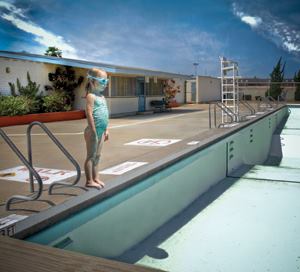Rep. Debbie Wasserman Schultz is no stranger to swimming pool and spa professionals.
And nowhere more so than in her home state of Florida.
The pro-choice, pro-gun control Democrat, who in 1992 became the youngest female lawmaker in state history at age 26, has made pool and spa regulation one of her top priorities.
“I’ve been doing this for the last 10 years,” she says. “This is a matter of protecting children’s lives. We don’t want to turn pools from fun and exciting places to be into a safety hazard.”
One of her landmark victories came in May 2000 when then-Gov. Jeb Bush signed into law the Florida Residential Swimming Pool Safety Act . The bill, which passed the Florida House on the final day of the legislative session, required that all new swimming pools and spas be equipped with either an approved pool safety cover, a 4-foot-high isolation barrier, self-closing and self-locking devices on all entrances to the pool area, or alarms on all doors and windows with direct access between the home and pool.
But ambiguities in how the law was written soon prompted legal challenges from local governments as well as the industry. In September 2000, for example, the Hernando County Board of Commissioners declared the law unconstitutional.
“Don’t get me wrong, I’m all for pool safety,” Commissioner Chris Kingsley told The St. Petersburg Time s. “But $400 to maybe $2,000 added to the cost of housing could add not only to the financing, but also affect anything related to that.”
But the real question is whether Wasserman Schultz’s legislation has stemmed the tide of drownings among the state’s youngest and most vulnerable residents.
In 2006, a study was conducted by Florida Department of Health Injury Epidemiologist Michael Lo titled, “Overview of Unintentional Drownings in Florida, Broward and Miami-Dade Counties.”
Among the study’s findings: In 1999, prior to the law’s passage, Florida totaled 180 near-drownings of children ages 0-4. And in the six years since passage of the Florida Residential Swimming Pool Safety Act, the average annual number of near-drownings statewide for the same age group increased to 197.
By comparison, Florida’s drowning rates from 1999-2003 for children ages 1-4 were nearly three times those of California — the nation’s most populous state for pools and residents.
“I’ve never felt like legislating would make the big impact,” says Johnny Johnson, president of the National Drowning Prevention Alliance and founder of the Blue Buoy Swim School in Tustin, Calif. “The more we rule, the more we need to rule.
“It really comes from education,” he adds. “It’s more about understanding why it’s important.”
-
RELATED LINKS
In the Name of Safety
- Examining the effectiveness of the first-ever nationwide pool and spa legislation. On the Clock
-
Was six months enough time to comply with the VGB Act?
MORE INFORMATION
VGB Resource Center
Find a variety of resources on the VGB Act ? from archived articles and news headlines to multimedia presentations and related links.



